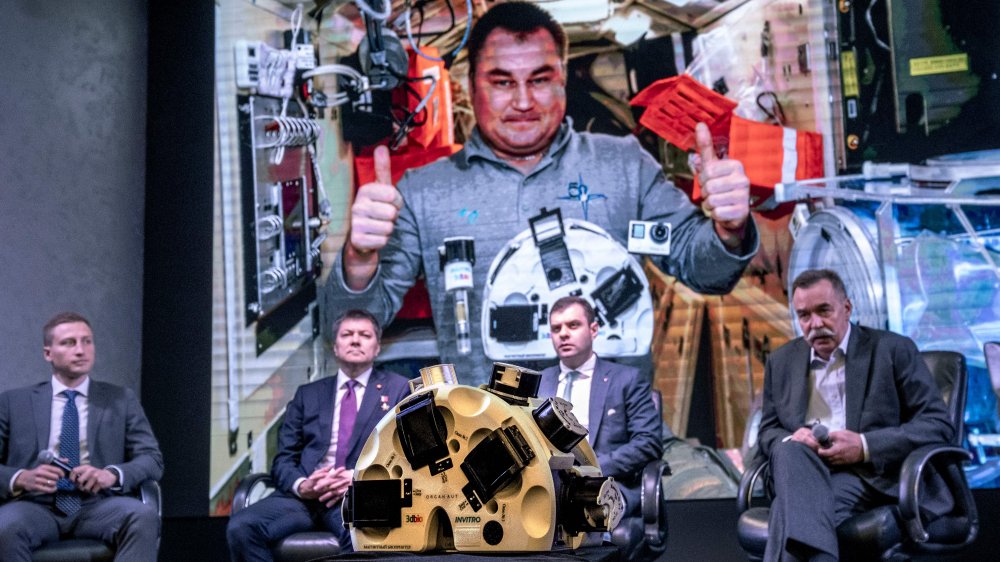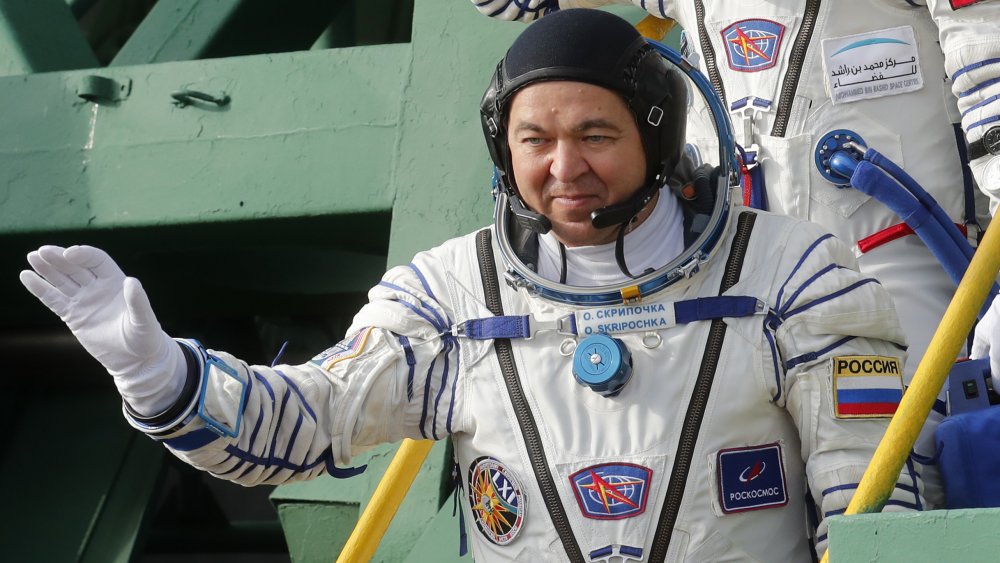A Cosmonaut Made 'Space Beef' With A 3D Printer
According to NASA, astronauts aboard the International Space Station (ISS) have an average of 1.83 pounds of food for each meal, each and every day. Included in that total is about a quarter of a pound of packaging. The average expedition lasts six months. It doesn't take a rocket scientist to see that even in zero gravity, the weight of those meals adds up.
Now imagine having to pack enough lunches for a round trip to Mars. A three-year, four-man mission would need more than 24,000 pounds of food. And what if the crew wanted to splurge for the Super Bowl? That would add an astronomical amount of food, not to mention Pepcid for indigestion. Ideally, there would be an easier way for a space jockey to give themselves heartburn. For instance, wouldn't it be awesome if they could make space food practically from scratch using a few cells as ingredients? Well, in 2019, a Russian cosmonaut on the ISS provided the first semblance of an answer to that question.
The cos-moos
Before going on his date with the stars, cosmonaut Oleg Skripochka received a series of vials from Israeli food tech company Aleph Farms. As detailed by How Stuff Works, those vials contained animal cells from a rabbit, fish, and cow respectively. On their own, they sound like the ingredients of an incomplete lab experiment. But with the aid of a modified 3D printer and some bio-ink, they became the stuff of sci-fi fantasies. Each sample yielded a sample of 3D-printed meat, including what Space.com calls "space beef."
3D-printed meat isn't a new breakthrough on its own. The first burger ever printed artificially mooed into existence in 2013. But in space, no one can hear beef scream, and gravity can't hold it down. So instead of printing tissue downward in layers, the meat is pieced together "from all sides simultaneously, like making a snowball." The process occurs much faster than on Earth. And since it doesn't require killing an animal or thousands of gallons of water, it doesn't involve the same waste or pollution. In other words, you don't have to have a cow over space-grown beef.

